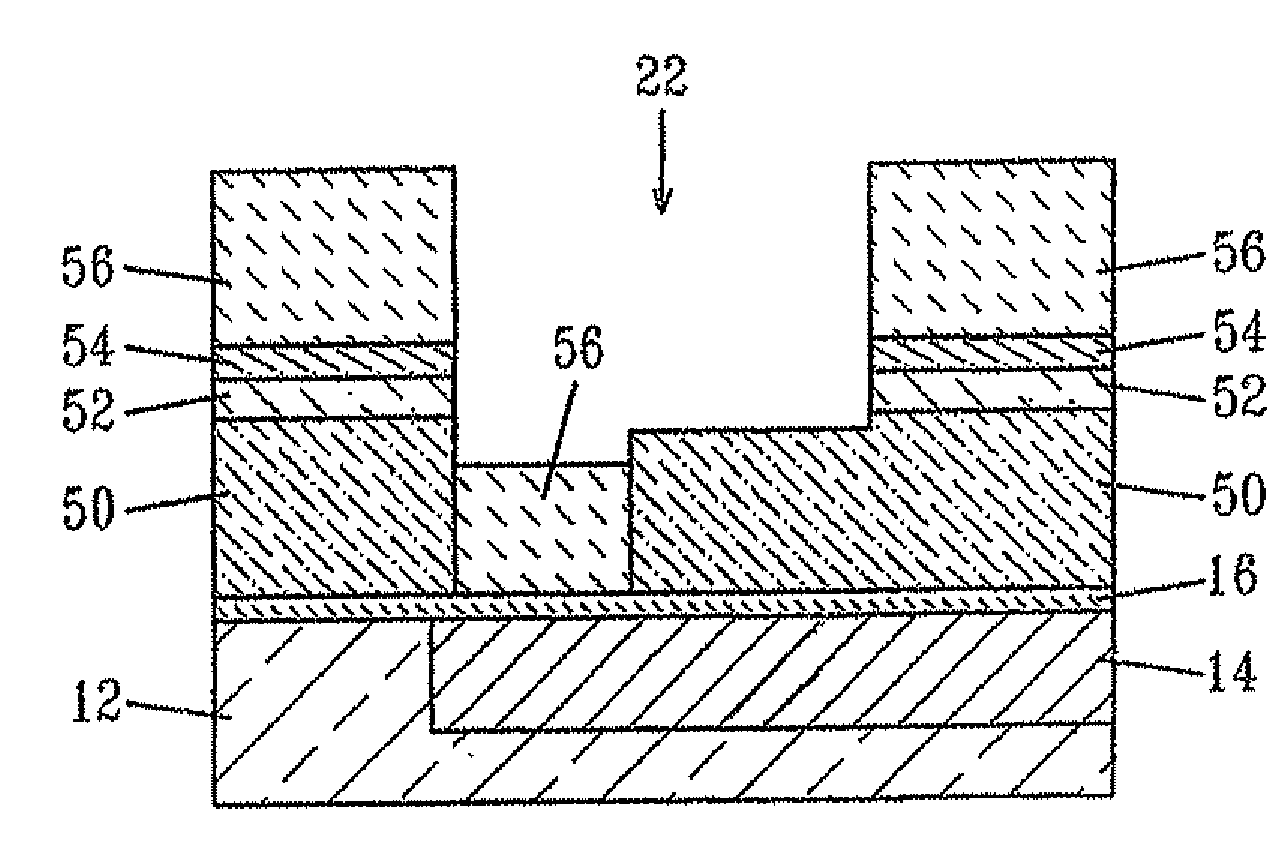Use of a porous dielectric material as an etch stop layer for non-porous dielectric films
a dielectric film and porous material technology, applied in the direction of semiconductor devices, semiconductor/solid-state device details, electrical apparatus, etc., can solve the problems of increasing the difficulty of efficient routing of these signals across the device, and increasing the difficulty of etching, so as to improve device functionality and performance, the effect of reducing the variation of line height and minimal line resistan
- Summary
- Abstract
- Description
- Claims
- Application Information
AI Technical Summary
Benefits of technology
Problems solved by technology
Method used
Image
Examples
first embodiment
7-oxabicyclo[2.2.1]heptane or 1,4-epoxycyclohexane (bp=119° C. at 713 mm Hg). One highly preferred fused ring species that is employed in the present invention is cyclopentene oxide (CPO).
[0035]The second precursor can also include a siloxane selected from tetramethylorthosilicate (TMOS), tetraethylorthosilicate (TEOS), vinyltriethoxysilane, allyltrimethoxysilane, vinyltrimethoxysilane, allyltriethoxysilane, phenyltriethoxysilane, and phenyltrimethoxysilane.
[0036]The porous OSG material is formed by providing a pore forming material such as a porogen during deposition. Although any deposition technique can be used in forming the OSG materials, the techniques disclosed in co-assigned U.S. Pat. Nos. 6,147,009, 6,497,963, 6,312,793, 6,441,491 and 6,479,110, the entirety of each reference is incorporated herein by reference, are particularly preferred herein.
[0037]The various OSG dielectrics may be deposited within the same reactor chamber without the need of breaking vacuum, or the var...
second embodiment
[0053]Next, oxide hard mask 54 is formed atop the non-porous hardmask 52 and an opening that is filled with a planarizing dielectric 56 is then formed by lithography, etching and deposition. The etching step includes any conventional etching process. Note that the etching process mentioned above which includes the fluorocarbon-based plasma etch can also be employed at this point of the present invention. The planarizing dielectric includes any material that can serve as a planarizing layer including for example, a non-photosensitive organic cross-linked polymer.
[0054]After forming the planarizing dielectric 56, an oxide cap 58 such as a low temperature oxide and an optional antireflective coating 60 are formed by known deposition methods. A patterned photoresist 62 containing a line pattern is formed by deposition and lithography. Several prior art etch processes are then used to etch layers 60, 58, and 56 which is subsequently followed by the inventive etch to process layers 54 and...
PUM
| Property | Measurement | Unit |
|---|---|---|
| pressure | aaaaa | aaaaa |
| dielectric constant | aaaaa | aaaaa |
| dielectric constant | aaaaa | aaaaa |
Abstract
Description
Claims
Application Information
 Login to View More
Login to View More - R&D
- Intellectual Property
- Life Sciences
- Materials
- Tech Scout
- Unparalleled Data Quality
- Higher Quality Content
- 60% Fewer Hallucinations
Browse by: Latest US Patents, China's latest patents, Technical Efficacy Thesaurus, Application Domain, Technology Topic, Popular Technical Reports.
© 2025 PatSnap. All rights reserved.Legal|Privacy policy|Modern Slavery Act Transparency Statement|Sitemap|About US| Contact US: help@patsnap.com



